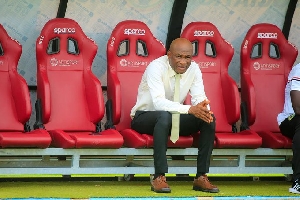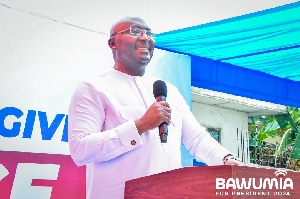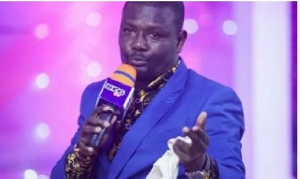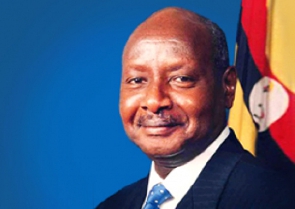- Home - News
- TWI News | TV
- Polls
- Year In Review
- News Archive
- Crime & Punishment
- Politics
- Regional
- Editorial
- Health
- Ghanaians Abroad
- Tabloid
- Africa
- Religion
- Election 2020
- Coronavirus
- News Videos | TV
- Photo Archives
- News Headlines
- Press Release
Opinions of Saturday, 21 December 2013
Columnist: Okoampa-Ahoofe, Kwame
My Madiba Moment - Part 12
By Kwame Okoampa-Ahoofe, Jr., Ph.D.
It was a proud moment, indeed, to be Black and African, in general, but in particular to be a South African, as my experiences with New York City cops and other security agents and officials were to shortly prove at City Hall and on the foregrounds of City College's ultra-modern Aaron Davis Theater. In the press pen at the Boys' and Girls' High School, my small team of a videographer and a sound man, and then my good friend Orlando McAllister, the man really in charge of our team, mingled freely with such notable mainstream television personalities as Brenda Blackmon, of WWOR-TV, New York City's Channel 9, and David Navarro, of WABC-TV, New York City's Channel 7. These two were then among the most recent faces in television on the New York media market. There well may have been other notables of the print media present as well. Everyone seemed to be jostling one another for a prime spot from which to either videotape or photograph the Mandelas, closely behind whom stood the newly elected Mayor David N. Dinkins and his wife. Other reporters, wielding notepads, simply wanted to get a good view of the world-famous couple.
Meeting these mainstream media professionals gave me quite a bit of the jitters. I felt a little self-conscious of my amateur status and downright diffident and wished that I hadn't decked my white polka-dot three-piece flowing Afro-Muslim suit and well-polished black Imperial shoes that made me garishly stand out in the press pen like the Statue of Liberty or the Martin Luther King Statue overlooking the great mall area in Washington, D.C. I also had on a white-knit lacey skull-hat, yarmulke-like as that which is commonly worn by Catholic bishops and Muslims.
Here we were, videotaping this mammoth Mandela rally for City College's Audiovisual Services Department, for broadcast on-campus on our close-circuit television system some three or so months hence, and perhaps for future generations of City College students as well, hobnobbing with on-spot and big-name reporters beaming live television coverage, almost simultaneously, into hundreds of thousands, if not millions, of homes and offices in the Tri-State (New York, New Jersey and Connecticut) region. It was almost as if we were the mini-toy version of these proverbial Real McCoys.
And then to further complicate matters, while we were in the midst of capturing Mandela and his gorgeous then-wife, Winnie, and their entourage on the podium, David Navarro tapped me gently on the left shoulder and asked my team to move a little bit off-center from where we directly faced the Mandelas, to enable him take a few close shots of the legendary couple. We promptly obliged. To be certain, I was more curiosity-struck than anything else. Viewing him largely from the distance of the television tube, I hadn't quite noticed that David was such a boyishly small man. In the press pen, he barely stood at about 5 feet 4 inches tall, which made him a shave shorter than I at 5-and-half feet. He also looked to weigh about 135-pounds or thereabouts, or perhaps even a little lighter. And he made on-camera reporting seem so easy. Nonetheless, there was something rather too stagey and all-too-artificial about the entire business of on-camera reporting, off-air, that made the entire process seem decidedly unattractive.
For a moment, I also found myself captivated, no, virtually hypnotized, by the glittering cynosure of a jet-black Brenda Blackmon, newly arrived on the mainstream New York City media circuit. Like David Navarro, Brenda looked much smaller than the in-studio television cameras made her seem on the nightly news. She was also svelte and willowy and agile-gaited, my kind of ideal woman during the heady Black Cultural-Nationalist Phase of my life. You see, the climate and temperature of the City College of New York (CCNY) into which I walked in the mid-1980s, fresh from Ghana, was one that was so racially charged, and morbidly so, as to promptly traumatize one with culture shock. Throw into the mix, my first upclose encounter with an openly lesbian white-blonde woman, and the picture of my culture shock could not be more turbulent.
Generally, the CCNY campus seemed to be polarized around the hateful rhetoric of two racially opposite professors, one seemingly unassuming but lethally imbued with deep-seated contempt and spite for African-Americans and all things Black and African. The white one's name was Michael Levin, an American-born Jewish man of European descent. A professor of Philosophy, Levin claimed his own parents and grandparents to have suffered Hitler's pogrom, otherwise called the Jewish Holocaust, and resiliently survivied almost intact. He overriding thesis was that African-Americans were typically shiftless and pathologically prone to making inexcusable excuses for their generally poor performance in both the academy and the larger society.
But Michael Levin also had another dark aspect to him that eerily brought this wiry and fragile-looking man dangerously close to being virtually mistaken for the double of the infamous German Nazi Chancellor. For one, Levin firmly believed in what he pontifically called the "innate inferiority" of the Black person and, implicitly, thought that about the only mistake Hitler made was to have bannished European Jewry from partaking of the collective and righteous prejudices of the so-called Aryan or Teutonic race. Once when I challenged him in The Campus newspaper, Levin backed off by saying that his anti-Black racist theories only pertained to African-Americans. He would also throw me a debating challenge on race through my friend Johnny Pugh, who was taking a course taught by him. I would ask Johnny to tell Professor Levin to first go and debate Hitler and then come and face me. I would never hear from Levin again.
Professor Levin would also insist that the generally perceived decline of academic standards in American universities was primarily due to federal government-sponsored Affirmative Action programs that had brought too many Black non-college material into the academy, rather than the cause being the generally poor education-funding policies of the central government. The "Levinian Theory," one of my favorite avuncular professors, the late Raymond Richard Patterson, called it "Levinites," posited that the future of the American academy would continue to remain bleak for as long as Affirmative Action policies were not reversed.
Levin's main opponent was Dr. Leonard Jeffries, Chairman of CCNY's Africana Studies Department at the time. The main contrast between these two ideologically racist personalities was that unlike his African-American nemesis, Levin knew the delicate demarcation line between pedagogy and personal beliefs, and those who knew him and students who had taken courses with him confirmed that, indeed, Levin was smart enough not to turn his classes into racial shouting matches, as had been widely reported of Dr. Jeffries. What this simply means is that Levin never preached his neo-Nazi beliefs to his students, and so he could not be legitimately accused of letting his racist personal views influence his grading policies. And, in fact, no student had accused him of having been poorly graded as a result of his or her ethnic and/or racial background.
Jeffries, on the other hand, poignantly laced his lectures with his rabidly racist views of European Americans, the "blue-eyed devils," according to the New Jersey native, and their "predatory Jewish corporate exploiters and bloodsuckers." Levin preferred to inject his racist views into his considerable corpus of academic writings; and he wrote and published quite extensively, largely in obscure Australian and other foreign academic journals. For his part, Jeffries wrote and published a piddling little; and the little that he was known to have published, largely opinion pieces in local African-American newspapers, were not adjudged to be exceptionally qualitative, either in style or content. That may well explain why the faculty of CCNY's Political Science Department were widely reported to have expressed vehement reservations about Jeffries' joining the department, in the wake of the largely avoidable dissolution and mergence of the Africana Studies Department into a newly established Ethnic Studies Department in the early 1990s.
Anway, the trip from Brooklyn's Boys' and Girls' High School, the first Mandela visit to any American high school during his three-day official tour of New York City in June 1990, back to Manhattan's City Hall, the seat of the New York Metropolitan mayoralty, was not an easy one. To echo the title of the autobiography of continental Africa's greatest freedom fighter in the twentieth century, it was "No Easy Walk To Freedom." For me and my little reportorial team, any talk of riding the train back up-north, for the four or five miles it took to get to City Hall, was totally out of the question and did not even come up. The entrances to the subways were heavily clogged with multitudinous waves of people either headed for the second Mandela rally, in the forecourt of City Hall, or back home to the various locations in New York City's five boroughs of Brooklyn, Queens, Bronx, Manhattan and Staten Island.
Our only sure bet of getting to our next destination in time to cover Mr. Mandela's second rally for the day, was to simply fall in with the densely packed crowd trailing the Mandela-Mobile. We managed to squeeze ourselves somewhere in the middle of the waves of human flies trailing the Mandela-Mobile, that bullet-proof chicken-coop-like miniature pent-house. The Mandela-Mobile was seated on the flatbed of a huge New York City Police Department (NYPD)-owned truck surrounded by members of the United States' Secret Service, I suppose, and other New York City government security agents and officers. There were also low-flying helicopters overhead.
I soon felt as if I had run short of breath; but I had no other choice than to simply move along with the riverine flow of the crowd, or else faint and get mercilessly crushed in the undertow of human feet. I willfully acquired my second wind.
_____________________________________________________________
*Kwame Okoampa-Ahoofe, Jr., Ph.D.
Department of English
Nassau Community College of SUNY
Garden City, New York
Dec. 21, 2013
E-mail: okoampaahoofe@optimum.net
###










